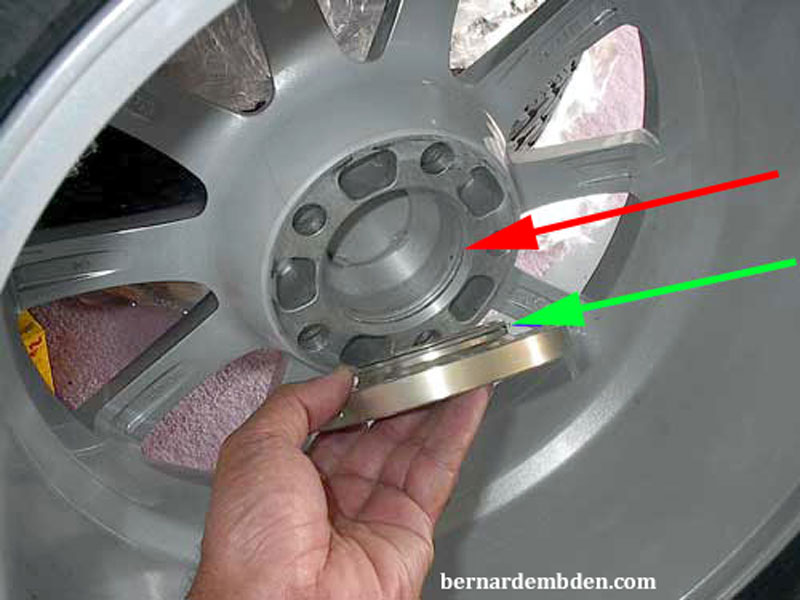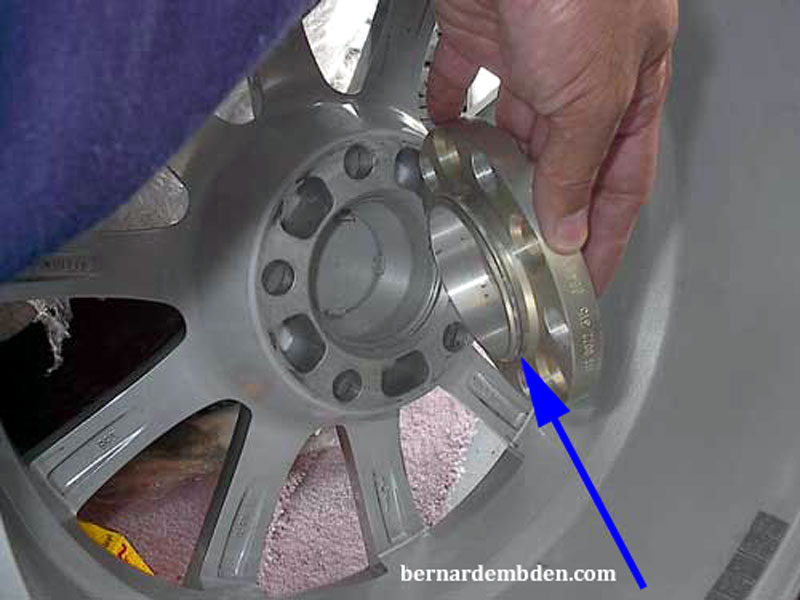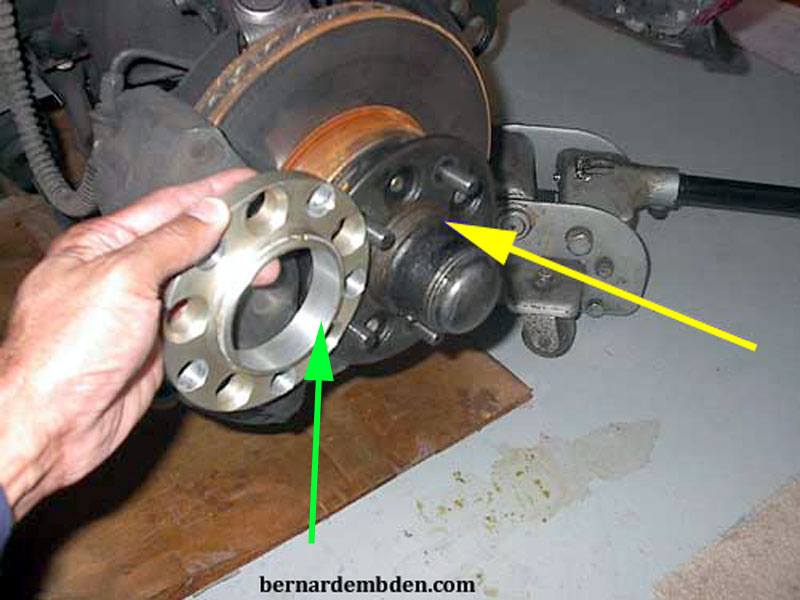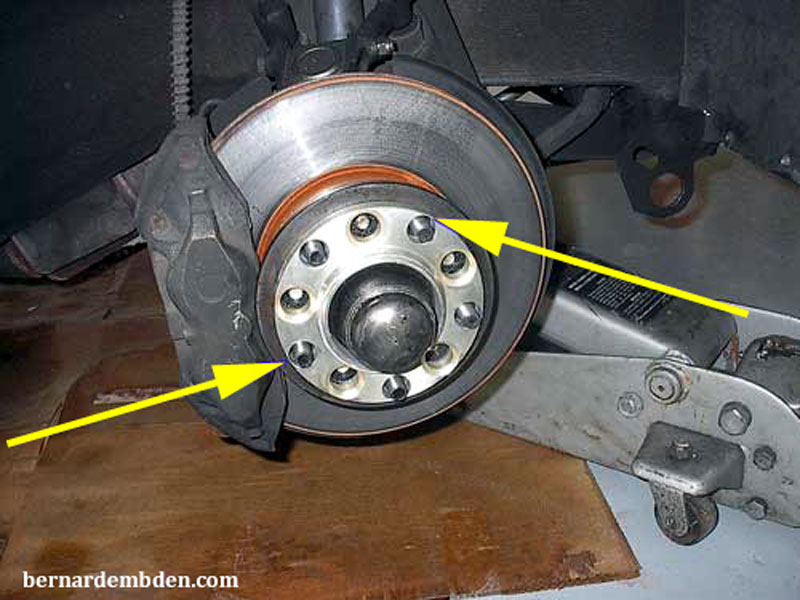

For years car enthusiasts have used spacers to accommodate wheel offsets that the wheel manufacturer's did not or could not offer. Wheel spacers, for various reasons, (all valid) they have been maligned as compromising the integrity of the wheel to hub mounting union.
Wheel manufactures have now produced "hub centric wheel adapters" as Ronal identifies their wheel "spacers". The following address the question. Are these "hub centric wheel adapters what the manufactures claim they are, i.e. a structural extension of the wheel backing with full hub centric load bearing function? Or are they simple wheel spacers with a new name?
Having installed wheels and tires using this hub centric adapter system it seems appropriate to examine exactly how this system functions.
The photograph below shows a Ronal hub centric adapter (green arrow) installed in one of their wheels. Note that the wheel has to be manufactured specific for this adapter.

Removing the adapter (photograph below) shows that it's manufactured with a "lip" (green arrow) that fits tightly inside a corresponding machined opening in the wheel (red arrow).

Photographed from another angle (blue arrow photograph below) The "lip" is clearly visible.

Re-installing the hub centric adapter on the wheel revealed that there was no lateral movement between the adapter and the wheel. This is important, because Ronal claims that these adapters are hub centric to the wheel, i.e. an integral part of the wheel.

Examining the Jaguar's front hub (photographs below) identifies the part on the hub that the adapter fits around. Note that the load bearing part of the hub is only approx. 1/2 inch wide. (yellow arrows), and raised slightly from the rest of the hub.


(Photograph below) Looking at the adapter next to the hub it's apparent that the adapter's inner surface (green arrow) is designed to fit over this load bearing part of the hub. (yellow arrow).


In the photograph below the load bearing part of the wheel hub is clearly visible (blue arrow).

When installing the adapter on the hub the adapter is initially larger than the hub until the last 1/2 inch. At that point there is an identifiable fit as the adapter is installed over the last 1/2 inch of the hub. This is the load bearing part of the front hub.

When held flush against the hub so that the adapter fits over the load bearing part of the hub, there is no perceptible lateral movement of the adapter.

As the photograph below illustrates, the adapter is hub centric to the hub. Note the even space around the wheel lugs (yellow arrows). This indicates the adapter's load bearing function is at the hub, not the wheel lugs.

My conclusion: Hub centric adapters, when designed and manufactured properly to fit a specific wheel, do maintain load bearing at the hub. As illustrated in another link in my website I currently have these wheels and hub centric adapters on my automobile.
